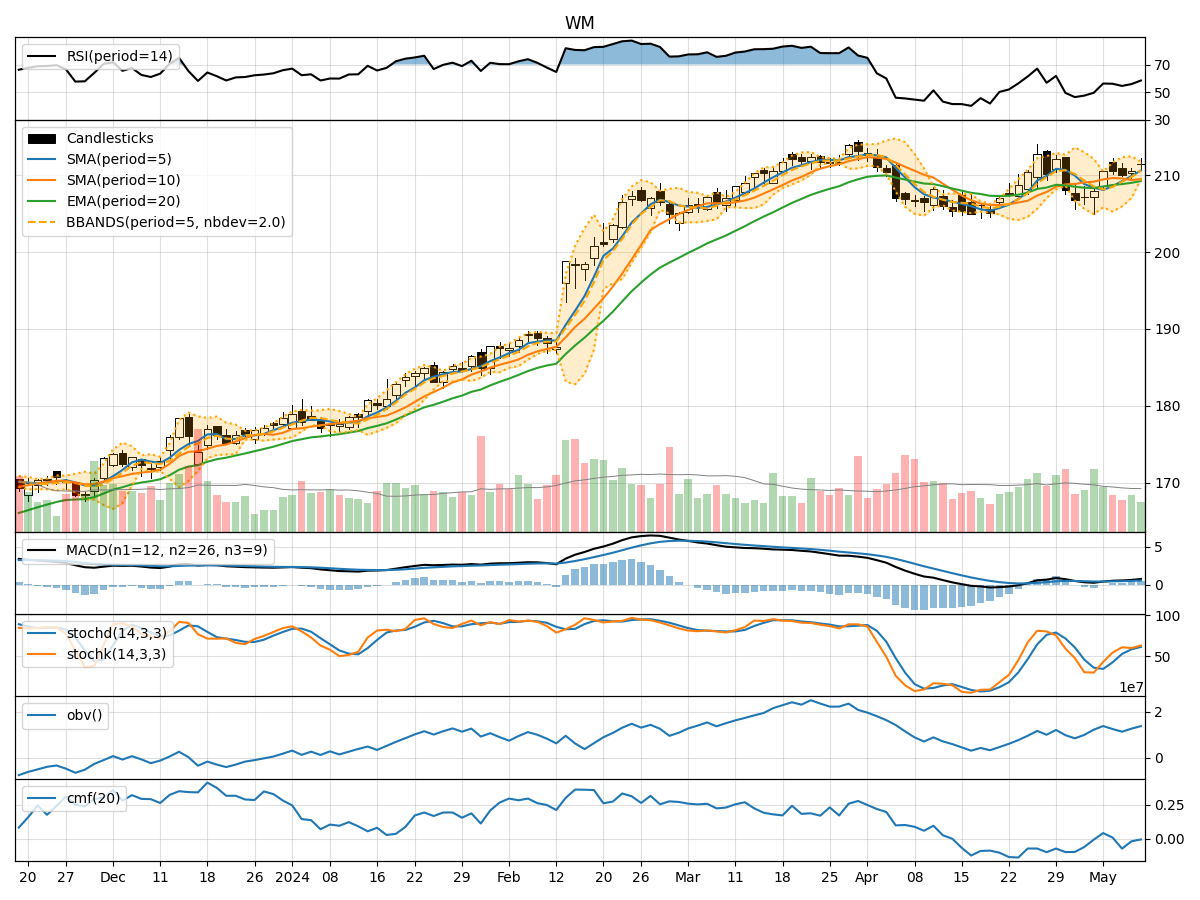
Technical Analysis of WM 2024-05-10
Overview:
In analyzing the technical indicators for WM stock over the last 5 days, we will delve into the trend, momentum, volatility, and volume indicators to provide a comprehensive outlook on the possible stock price movement in the coming days.
Trend Analysis:
- Moving Averages (MA): The 5-day Moving Average (MA) has been steadily increasing, indicating a positive trend in the short term.
- MACD: The MACD line has been consistently above the signal line, suggesting bullish momentum.
- EMA: The Exponential Moving Average (EMA) has been trending upwards, supporting the bullish sentiment.
Momentum Analysis:
- RSI: The Relative Strength Index (RSI) has been fluctuating around the mid-level, indicating a neutral momentum.
- Stochastic Oscillator: Both %K and %D have been in the overbought territory, suggesting a potential reversal.
- Williams %R: The Williams %R is in the oversold region, signaling a possible buying opportunity.
Volatility Analysis:
- Bollinger Bands: The stock price has been trading within the Bollinger Bands, indicating a period of consolidation.
- Bollinger Band Width: The Band Width has been narrowing, suggesting a decrease in volatility.
- Bollinger Band %B: The %B indicator is hovering around the middle, reflecting a balanced market sentiment.
Volume Analysis:
- On-Balance Volume (OBV): The OBV has shown mixed signals, with fluctuations in volume accumulation.
- Chaikin Money Flow (CMF): The CMF has been negative, indicating selling pressure in the market.
Key Observations:
- The trend indicators suggest a bullish outlook in the short term.
- Momentum indicators show a mixed sentiment with potential for a reversal.
- Volatility indicators point towards a period of consolidation.
- Volume indicators reflect uncertainty in market participation.
Conclusion:
Based on the analysis of the technical indicators, the next few days for WM stock are likely to see sideways movement with a slight bullish bias. Traders should exercise caution and closely monitor key support and resistance levels for potential entry and exit points. Consider setting tight stop-loss orders to manage risk effectively.